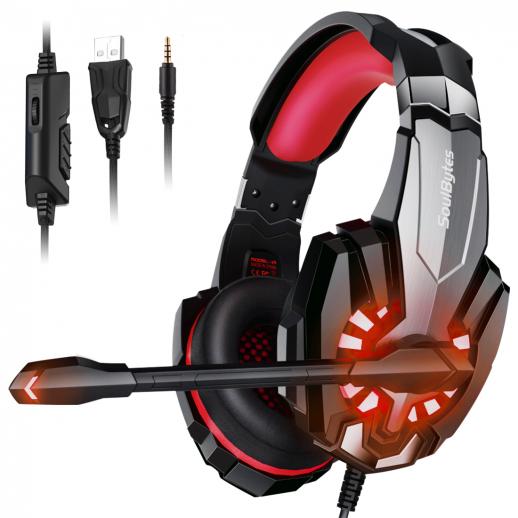How To Change Headphone Settings?
In today's digital age, headphones have become an essential accessory for many of us. Whether you're using them for work, entertainment, or communication, optimizing your headphone settings can significantly enhance your audio experience. This article will guide you through the process of changing headphone settings on various devices, ensuring you get the best sound quality and functionality.

Understanding the Basics
Before diving into the specifics, it's important to understand the basic components and settings that can be adjusted on your headphones. These include:
1. Volume Control: Adjusting the loudness of the audio.
2. Equalizer (EQ) Settings: Tweaking the balance between different frequency components (bass, midrange, treble).
3. Microphone Settings: Adjusting the sensitivity and volume of the built-in microphone.
4. Noise Cancellation: Enabling or disabling active noise cancellation features.
5. Bluetooth Settings: Pairing and managing connections with wireless headphones.
6. Spatial Audio: Enabling 3D audio effects for a more immersive experience.
Changing Headphone Settings on Different Devices
1. Windows PC
Volume Control:
- Click on the speaker icon in the taskbar.
- Adjust the slider to increase or decrease the volume.
Equalizer Settings:
- Right-click the speaker icon and select "Sounds".
- Go to the "Playback" tab, select your headphones, and click "Properties".
- Navigate to the "Enhancements" tab and check "Equalizer".
- Choose a preset or manually adjust the frequencies.
Microphone Settings:
- Go to "Control Panel" > "Hardware and Sound" > "Sound".
- Click on the "Recording" tab, select your microphone, and click "Properties".
- Adjust the levels and enhancements as needed.
Bluetooth Settings:
- Go to "Settings" > "Devices" > "Bluetooth & other devices".
- Ensure Bluetooth is turned on and pair your headphones.
2. Mac
Volume Control:
- Click on the volume icon in the menu bar.
- Adjust the slider to change the volume.
Equalizer Settings:
- Open "Music" (formerly iTunes).
- Go to "Window" > "Equalizer".
- Choose a preset or manually adjust the frequencies.
Microphone Settings:
- Go to "System Preferences" > "Sound".
- Click on the "Input" tab and select your microphone.
- Adjust the input volume slider.
Bluetooth Settings:
- Go to "System Preferences" > "Bluetooth".
- Ensure Bluetooth is turned on and pair your headphones.
3. iPhone/iPad
Volume Control:
- Use the physical volume buttons on the side of the device.
- Alternatively, swipe down from the top-right corner to access the Control Center and adjust the volume slider.
Equalizer Settings:
- Go to "Settings" > "Music" > "EQ".
- Choose a preset that suits your preference.
Microphone Settings:
- Microphone settings are generally app-specific. For example, in the "Voice Memos" app, you can adjust the input volume within the app settings.
Bluetooth Settings:
- Go to "Settings" > "Bluetooth".
- Ensure Bluetooth is turned on and pair your headphones.
4. Android
Volume Control:
- Use the physical volume buttons on the side of the device.
- Alternatively, swipe down from the top of the screen to access the quick settings panel and adjust the volume slider.
Equalizer Settings:
- Go to "Settings" > "Sound & vibration" > "Advanced sound settings" > "Sound quality and effects".
- Choose a preset or manually adjust the frequencies.
Microphone Settings:
- Microphone settings are generally app-specific. For example, in the "Voice Recorder" app, you can adjust the input volume within the app settings.
Bluetooth Settings:
- Go to "Settings" > "Connections" > "Bluetooth".
- Ensure Bluetooth is turned on and pair your headphones.
Advanced Settings and Tips
Noise Cancellation
Many modern headphones come with active noise cancellation (ANC) features. To enable or disable ANC:
- Refer to the headphone's user manual for specific instructions.
- Typically, there is a dedicated button on the headphones or an option within the companion app.
Spatial Audio
Spatial audio provides a 3D audio experience, making it feel like the sound is coming from all around you. To enable spatial audio:
- On iPhone/iPad: Go to "Settings" > "Bluetooth", tap the "i" next to your headphones, and toggle "Spatial Audio".
- On other devices, check if your headphones support spatial audio and refer to the user manual for instructions.
Troubleshooting Common Issues
Headphones Not Detected
- Ensure your headphones are properly connected (wired) or paired (wireless).
- Restart your device and try reconnecting.
- Update your device's software and headphone firmware.
Poor Sound Quality
- Check the equalizer settings and adjust as needed.
- Ensure the headphone jack or Bluetooth connection is secure.
- Clean the headphone jack and earpieces to remove any debris.
Microphone Not Working
- Ensure the microphone is not muted and the input volume is set correctly.
- Check app-specific microphone settings.
- Restart your device and try again.
Optimizing your headphone settings can greatly enhance your audio experience, whether you're listening to music, watching movies, or participating in virtual meetings. By understanding and adjusting the various settings available on your device, you can tailor the sound to your personal preferences and needs. Remember to keep your device and headphone firmware updated to ensure compatibility and access to the latest features. With these tips and tricks, you'll be well on your way to enjoying the best possible audio experience with your headphones.

There are no comments for this blog.